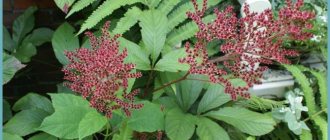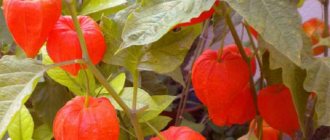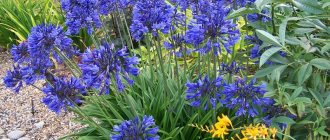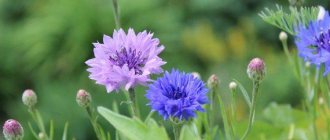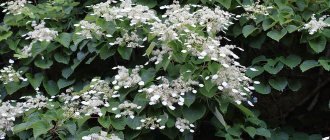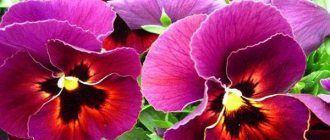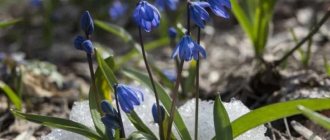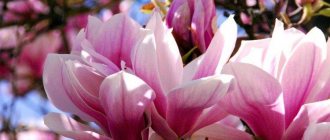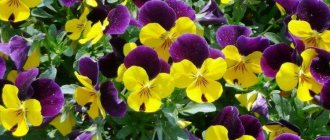The earth's flora is rich and diverse. Among the usual trees, shrubs, and herbs growing in certain natural areas, there are special plants that differ in appearance and method of survival in dry times. This group of evergreen, fleshy, long-lived plants was called succulents, which means they have the ability to store moisture in their tissues. A sufficiently developed shell and a slow evaporation process during the day ensure the preservation of water in the swollen leaves and stems.
Succulents - outdoor perennials
Only plants with special tissues capable of storing water can survive in regions with difficult, dry climate conditions. People have learned to grow succulents in a favorable home environment. Succulents on the street are still used as exotic decoration. The bright flowers of cacti and their unusual-looking fleshy leaves decorate and enliven sunny gardens. Unusual potted compositions, skillfully composed of different types of succulents, began to appear on the streets more often.
Potted arrangements outdoors
Levisia
Among succulents, a low bush strewn with large, ball-like inflorescences occupies a special place. This is Levisia. The plant is characterized by its resemblance to a living bouquet. A combination of numerous colors and shades came together in a small drought-tolerant bush.
Rejuvenated
The young flower is an ideal succulent for creating alpine slides and their lower tier. During flowering, it especially looks like a thornless cactus that accidentally ended up in the middle zone. Growing young and propagating an exotic plant is not difficult; it can take root in any soil, even without roots.
Bacopa
Ampelous bacopa, grown in hanging baskets, looks original in street design. Its unusualness is expressed in small leaves and flowers of different colors (blue, white, pink). These creeping succulents are able to form a root system wherever its shoots come into contact with the soil. A wonderful combination of colors and shapes is obtained in the vicinity of other flowering plants. Here you can experiment as much as you like.
Dorotheanthus
This miniature South African plant has become a characteristic feature of garden decoration. Succulents in the garden in the form of this bush transform the area with bright flowers and unusual-looking shoots. Many flower growers have chosen this species, similar to the usual daisies, which begins flowering in June and ends in mid-autumn. Such a long flowering period is possible with proper care. Tinted green leaves covered with shiny fibers, multi-colored and even two-color buds emphasize the unusualness of the flower stalks.
Apthenia
The South African and South American continents gave another evergreen plant called athenia. The peculiarity is expressed in the name, which in Greek means that athenia blooms at noon. The name is true. The fleshy leaves are bright green, wedge-shaped with smooth edges and have the opposite arrangement. Small round flowers bloom in their axils, shining in all shades of purple.
For your information! When succulents in the countryside finish flowering, seed pods appear in their place.
Delosperma
It stands out among succulents by the appearance of unusual salt crystals on the green surface, which resembles an ice cover on the leaves. Low shrubs are covered with a bright multi-colored scattering of petals during flowering. At home, they grow as perennial succulents; only some species manage to survive the winter in country garden plantings.
Delosperma is a representative of the succulent genus
Euphorbia myrtifolia
Gardeners fell in love with milkweed (Euphorbia) for its beauty and undemanding conditions. There are known varieties of annuals and perennials, evergreen bushes and tree-like frost-resistant plantings. Euphorbia, with its decorativeness and originality, contributes to the design of borders and flower beds. It is used in garden or park areas to create a rocky slide or rock garden. Various plants are planted there along with milkweed.
Ragwort
The number of flowering varieties is large, the most numerous among them is the genus Raspberry, numbering about 1200 species. Some of them attract with unusual silver foliage, another part has bright flowers similar to familiar daisies, and the third part best decorates, for example, the shoreline of a country pond. Herbs stand out from the variety of species. Tree-like ragworts (an African species), shrubs, and vines are known.
For your information! Some similarity with watercress gave the plant its name in the Russian manner.
Variety of species
Vertical gardening
Succulents are great for vertical gardening. They can be used to decorate arches and pergolas or make a special support structure or shelving.
Tradescantia, which can climb along a support or be grown in a flowerpot, perfectly complements the planting of succulents. And also, hoyas or wax ivy as a hedge.
In the form of ampels you can use:
- some types of ragworts (Rowlea, creeping ragwort and lemongrass)
- epiphyllum
- rhipsalis
- Schlumberg (Decembrist)
- sedums, such as Sedum morganianum ("donkey's tail"), creating magnificent cascades on fences and facades
Under comfortable conditions, these plants will definitely delight you with their flowering.
Ground cover or creeping succulents
Gardeners and landscape designers know plants that are called ground cover species. Their essence is that these low-growing and sometimes creeping seedlings actively spread across the area, capturing the territory in a special way. It turns out to be a kind of carpet of creeping succulents.
sedum
Succulents: home care and main types of the family
This flowering beautiful plant came to the middle latitudes, like other succulents, from dry American, African, and Eurasian regions.
Note! In addition to its decorative features, sedum (another name is sedum) is known as a medicinal painkiller that heals burns and wounds. Extracts from sedum juice are widely used in the manufacture of medicines, as well as for culinary purposes.
Survives drought thanks to the natural ability to absorb and retain water in the leaves. The stems of sedum are erect, up to 80 cm high, with inflorescences of different shades and shapes.
Portulacaria: decorative mini-tree
This variety of succulents is a miniature plant, the height of which does not exceed 40 cm. The trunk is made in the form of a powerful base of a dark brown hue. Its diameter can reach 5 cm.
The leaf plates are round in shape with a dense base inside. The plant has a powerful root system, which is capable of storing up to 80% of nutrients within itself. Such a crop must be planted in a sandy mixture.
Succulents in a flowerbed
Types of daisies - flowering border perennials
Nature has not deprived areas with arid climates of exotic vegetation. It was there that perennials with fleshy, thick leaves took root. People learned to grow them at home a long time ago, and succulents began to appear in flower beds, although this is still a rare occurrence. But the sunny garden has suitable conditions for cultivation. You can try planting them as annuals in a small area.
Landscape design will only benefit from the presence of voluminous flowerpots with rare plants on the street.
Succulents in a flowerbed
How to create a succulent garden with your own hands at the dacha
Due to inexperience and the noblest motives, one can end up with a flower mess out of a beautiful flower bed. Decisions that arise as a result of an emotional outburst are unacceptable here. Garden succulents will be lost in this confusion, all their beauty will become an unsightly stain.
As in any serious matter, here you need to plan, carefully think through everything, how to lay out the site, what seedlings to prepare.
- You need to prepare several identical specimens for planting, preferably an odd number of each.
- Schematically depict in what places what color spots will be placed.
- While maintaining symmetry, distribute a repeating color tact, that is, you need to draw a flower garden.
- Pay attention to the arrangement of silver-colored plants to give harmony and completeness to the design plan.
Important! If you use flower containers, you should note their large dimensions.
Home grown succulent garden
Rejuvenated
It is not for nothing that this flower from the Crassulaceae family was previously called tenacious, and the scientific name of the genus translates as “always alive.” Rejuvenated is very unpretentious, withstands various climatic changes and hardships.
Some varieties of this succulent are called bunny cabbage or rock rose. Like sedums, its leaves form dense buds that look like large garden roses. The foliage of the young is fleshy and dark green. The plant blooms annually with pink flowers - stars or bells.
These succulents are highly decorative and are highly valued in floriculture and horticulture, and the abundance of varieties allows you to choose the most suitable plants, including for creating spectacular compositions. The most common types of juveniles are:
- Roofing - the diameter of the rosettes is 12–15 cm, the color of the leaves is most often dark green, but there are varieties with reddish, yellow and even brown foliage. Flowering duration is 1.5 months.
- Cobwebby (cobwebby) - in nature grows in the form of turf. It has oblanceolate leaves of red or green color with reddish tips, on which there are whitish hairs that form a coating like a cobweb.
- Marble - grows in the form of compact rosettes formed from pale green or red leaves with red tips. Blooms with pink flowers.
Juveniles feel good in sandy, loose soil, with good drainage. The plant does not need frequent watering; in warm weather, 2-3 procedures per month are sufficient. It reproduces through daughter rosettes, which are formed in the axils of the mother specimen.
The succulent is suitable for decorating flower beds, paths, rock gardens, and goes well with representatives of its genus and other plants.
Succulents for an alpine slide
For example, you can improve your garden in the Moscow region by installing a man-made rock garden. This is a bold action; every flower lover is capable of being original in his own area. Outdoor succulents are used for this purpose. An ideal place would be a well-lit area of the garden. The background will be the facade of the building.
Forest cyclamen and other outdoor species: garden, Kos, mix
However, before you start designing the garden, it won’t hurt to work with special literature and enrich your knowledge about the plant world.
Succulents in the garden: planting and care
Unusually beautiful and easy to care for - this is how succulents are characterized. In any region: in Siberia, the Urals and western regions, the requirements are the same. They need plenty of light, a convenient container or pot to grow in, and minimal care from the grower.
Housing design and public institutions benefit from growing unpretentious flower stalks.
Succulents in open ground: how to winter
Wintering succulents in temperate regions became possible thanks to the passion and resourcefulness of gardeners and flower growers. It was through the efforts of enthusiasts that cacti and other southern representatives of the plant world came into the open ground. Even wintering succulents for the garden have appeared, and agrotechnical methods have been developed for cultivating them in open space.
What soil should I plant in?
As strange as it may sound, you need to grow succulents in open ground in loose, poor, clayey and even rocky soil. Such conditions allow moisture and air to freely penetrate to the roots. Regarding clay soil, experts say that this mineral substrate meets the basic requirements:
- inertia;
- chemical neutrality;
- ability to retain water;
- aeration;
- strength.
Note! River sand, fine gravel, and activated, but not medical, carbon can be used as soil loosening agents.
You should not overfeed succulents; this causes them to bloom less often, the color of the flowers fades, the needles do not develop enough, and the plants lose their survival rate during the wintering period.
Alpine slide in the yard
Fertilizer
Flower growers should not frequently water, feed with black soil and heat succulents in winter. Winter is a time when it is better to leave plants alone and not fertilize them. Excess fertilizer provokes the growth of multiple thinned, weak shoots.
In spring, fertilizing is carried out no more than once a month with low concentration fertilizers. Special mineral supplements can be purchased at flower shops.
Common species of succulentus
| Representatives | Peculiarities | Interesting varieties |
| Sedum | Most varieties are sun-loving, but some can be grown successfully in partial shade. | Caramel, Raspberry, Stars in emerald. |
| Rejuvenated | It is able to withstand both harsh winters with little snow and summer heat with drought equally well. | Stone rose |
| Spurge | The family includes a number of species, most of which are heat- and sun-loving. | Mountain snow, Early snow |
| Ragwort (cineraria) | When growing milkweeds and groundsels, take care to limit children's access to them: all parts of these beautiful plants are poisonous. | Silver dust |
| Purslane | The plant, unlike most succulents, needs regular watering (without stagnant water). | Pun, Pink Haze, Coral Reef |
| Lithops | When grown in portable containers, it can become a remarkable part of garden compositions. | Living stones |
| Bacopa | A profusely and beautifully flowering perennial, grown as an annual in regions with frosty winters. | Vasilisa, Utopia, Pinktopia |
| Dorotheanthus | In the southern regions it can winter under cover. Requires maximum sunlight. | Dorotheanthus daisy |
| Delosperma | A miniature shrub 10–30 cm high, capable of withstanding frosts down to -28°C. In brightly lit flower beds and alpine hills it blooms profusely and for a long time. | star dust |
Diseases and pests of succulents
Beautiful, undemanding plants have earned popularity due to their whimsical shapes and ease of care. But they can get sick from improper care, damage by insects or fungi, or rot.
Therefore it is necessary:
- observe the watering and feeding regime;
- Provide the bottom of the planting hole with a drainage mixture;
- there should be a hole at the bottom of the vase;
- propagate vegetatively in spring and summer, keeping the cuttings in the air for several days before planting, thereby protecting against the penetration of parasites into the cut.
The distribution of succulents in gardens and parks is justified. The originality and uniqueness of the natural creation create a good mood, ennobling the area. The main thing is to choose the right types of plants and provide them with proper care.
Why are they dying for you?
You cannot plant succulents in purchased peat-based soil and water them frequently.
The main enemies of succulents are dampness and darkness.
. They cannot grow on shady windows or away from windows and the sun. More precisely, they can, but they will be elongated, weak, frail plants.
Succulents die when they are planted in purchased soil for cacti (unfortunately, the soil for cacti in the store is also based on peat, which succulents do not like), watered abundantly, placed in the shade, watered regularly in winter when kept on cold windows (forgetting wintering and root rotting in damp, cold soil). They cannot survive in such conditions.
How does Euphorbia triangular reproduce?
Euphorbia of this species can only be propagated by cuttings; other methods at home are ineffective and are not used. Reproduction is carried out in the spring. For these purposes, young shoots located on the side shoots are cut off (optimal length is 10 cm) and washed under warm running water to remove the juice.
Propagation of crops by cuttings
One cutting is not enough; it is recommended to have a supply of shoots. The cuttings are left to dry and wither for 2-3 days. Crushed charcoal is applied to the cuts. To root the cuttings, they are planted in damp river sand or perlite. The container is placed in a warm and well-lit room, protected from the aggressive effects of the sun. Rooted seedlings are moved to permanent pots.
Apthenia
The most common throughout the Russian territory is Cordifolia (Ap. cordifolia), another name is Mesembryanthemum cordifolium. Requires sufficient but diffused light content. When placed in open areas, gradual adaptation to direct sunlight is necessary.
The optimal temperature is from 22° to 25 warm degrees. It tolerates wintering without complications. It is advisable to plant individually (rapid development contributes to a negative neighborhood). Its maintenance is minimal. Excess moisture should be avoided.
Sedum (Sedum)
The variety of forms of these, for the most part, perennials is expressed by shrubs, herbaceous specimens or semi-shrub characteristics. The flowering period occurs in the second half of the warm season. Excellent honey plants provide the garden with a sufficient number of pollinators, which are so necessary for many garden and vegetable crops.
All Sedums are drought tolerant, preferring open spaces.
When choosing green “pets” for places with cold winters, you should pay attention to frost-resistant varieties. Guests should plant flower beds before the onset of summer, waiting for the return of possible seasonal frosts
The main concern is the need to frequently weed out weeds that can choke out both young and adult species. The exception is, perhaps, one Caustic Sedum, which can cope on its own. Watering is carried out only when drought or extreme heat occurs.
Timely shortening of growing shoots and pruning of faded inflorescences and leaves control the decorative condition. With the onset of stable cooling, all above-ground parts are cut off at a level of up to four centimeters from the soil surface. The resulting “stumps” are awakened by the earth for wintering. Common garden species:
- The bent Cristatum (reflexum 'Cristatum') is known as “Comb”, “Cockscomb”. The varietal feature is expressed by the bright green color of the leaves, reminiscent of needles. Grows into a thick carpet;
- Vidny (S. spectabile) is bred in large quantities with emphasis on leaf and flower color. Looks good in a group combination of different varieties, with conifers. There are quite tall specimens (0.8 meters in height);
- False (spurium) is represented by cleverly intertwined shoots that are capable of rising (more often creeping). Blooms from mid-summer. Star-shaped flowers are collected in corymbose inflorescences. Serve as bright color accents;
- Acrid (acre) is a ground cover plant. The first year, young shoots try to take root in places of contact with the ground. In the second year, during the flowering period, the green foliage is drowned in rich yellow featherbeds;
- Spanish (S. hispanicum) forms a carpet where it grows with a striking bluish tint. Having finished blooming, all shoots die off. Rapid revival occurs by self-seeding.
Read a detailed article about garden species Sedum and their care
Basic methods of reproduction
Such unpretentious plants can be propagated in many simple ways. Breeding succulents is carried out:
- By cutting - separating the cutting from the mother plant and replanting it in a separate container with soil.
- Leaf propagation - when the succulent has leaves and they can be separated, they are placed in a container of water until roots appear, and then planted.
- Seed propagation. If your succulent produces seeds, planting them in a separate pot is the least stressful way to propagate it.
The third method of growing plants is widely used by gardeners and simply lovers of exotic plants. Succulents from seeds grow quickly and in large quantities, but for this they need to create the right conditions and not forget about regular care.
Why do you have to compose the soil yourself?
Peat is an organic matter that is biodegradable by soil fungi, bacteria and blue-green algae. This is not suitable for succulents at all.
Succulents grow in the desert, and the best soil for them is dry dust, clay, stones and sand.
. These are subtrates with a low organic content and without dampness. They do not contain peat or other rich sources of organic matter.
Under no circumstances should you plant succulents in purchased peat-based soil, even if it is called “Special soil for desert cacti.” That is why, if you want not to ruin another plant, you will have to work with the soil yourself. Actually, it's not difficult.
Constantly moist organic substrates (peat in a spacious pot and with good watering) are a natural habitat for soil microflora, fungi and bacteria.
Succulents in their natural habitats do not encounter the presence of soil microflora in the substrate and therefore have absolutely no immunity to it
. Their roots in your house die from ordinary soil microorganisms that are harmless to other plants.
To grow succulents you need soil that dries out very quickly.
Peat and soils based on it take a very long time to dry out due to the high water-holding capacity of peat. If such soil is dry, it is extremely difficult to wet it back: the water simply flows down the walls of the pot without reaching the roots. This soil needs to be watered regularly, without drying it out. And for succulents, regular drying of the earthen coma is the main measure to prevent rotting.
Ordinary outdoor forest or garden soil mixed with coarse sand is best suited for succulents.
Coarse sand is available in the supply section of pet/aquarium stores. There is no need to heat or steam the soil and sand. It is also not necessary to spill the soil with potassium permanganate, because potassium permanganate is a strong oxidizing agent that worsens the chemical properties of the soil.
Caring for garden plants
Outdoor Succulents can tolerate periods of drought, but should still be watered regularly throughout the growing season. If the soil is dry a few inches down, water the flower generously and then let the soil dry out again.
The most common problem encountered with these plants is rot. Keep the stems away from the soil and allow the soil to dry out between waterings. Also, water at the base of the plant to keep the leaves dry. This will help avoid rotting.
Insects and other pests can also interfere with healthy plant growth. Therefore, when they appear, it is necessary to immediately treat the plant with special preparations.
If necessary, dead stems and shoots can be removed. The shoots can be used as seedlings. Place them in well-drained soil and care for them until their roots become fully established. After this, you can plant the resulting plants in open ground in your garden or country house.
We offer you a short overview video of succulent plants in the garden:
